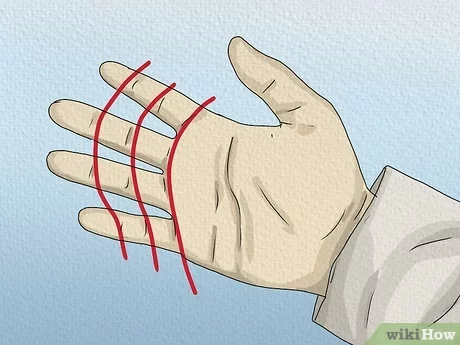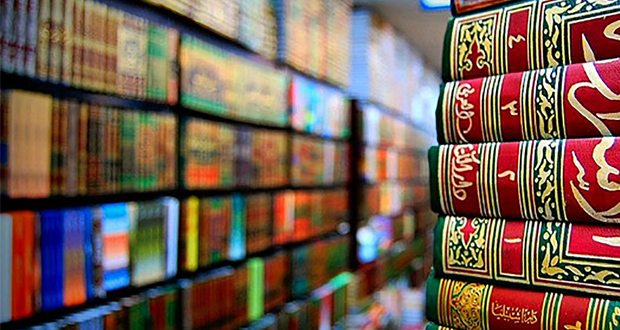Medical sciences have witnessed unprecedented developments in the past decades that have resulted in better health care systems in many countries of the world. Last decade, the World Health Organization's World Health Report for the year 2000 ranked the Kingdom of Saudi Arabia 26th in terms of the performance of its health care system compared to that of 190 other countries assessed in the report.
This is particularly significant in view of the fact that the country receives millions of pilgrims from around the world annually; a most certain stress to any health care system.
More than a century ago, a similar assessment was made of the Kingdom's ability to cope with the large influx of pilgrims it was receiving, but with very different results. Pilgrims to the Holy Lands were facing a significant health hazard due to the especially crowded conditions of the pilgrimage.
This health hazard was so considerable that foreign visitors to the country left with a very negative impression; one they didn't fail to share upon their return! Particularly noteworthy were comments made by the Italian adventurer, Giovanni Finati, after his 1814 visit to the Holy City of Makkah.
His and others' comments, in addition to the deteriorating conditions faced by Muslims traveling to perform the ritual, prompted the Ottoman Empire's then Sultan `Abdul-Hamid (1876 – 1909) to send Doctor Shakir Al-Qaysari from Istanbul's Haydar Pasha Hospital to accompany the 1890 AD – 1306 AH (after Hijrah) Ottoman Hajj expedition in order to assess the situation in the Holy Lands and report back with his results.
Dr. Al-Qaysari's report was filed to the Sultan on the 23rd of Ramadan, 1307 AH. His recommendations focused on specific steps needed to enhance health conditions amongst the pilgrims and to prevent the spread of infectious diseases.
En Route to Jeddah
The doctor's recommendations began with the need for a more thorough supervision of the boats transporting the pilgrims from their homelands to the Hejaz. Over-crowding on the decks was to be prevented, stagnant drinking water from the ships' water tanks was not to be used, and the ships' warehouses and restrooms required periodic cleaning.
In order to protect the pilgrims from the cold, the ihram clothes needed to be thickened and lengthened. Al-Qaysari also seriously urged the Sultan not to allow the poor, the ill and the elderly to make the arduous journey to the Hejaz under such conditions.
Most ships setting sail to the Kingdom disembarked in the port city of Jeddah, releasing tens of thousands of pilgrims from India, Asia and Africa. The high temperatures and humidity characterizing the seaport city spoiled much of the water in the city's reservoirs, which resulted in an increased incidence of infectious diseases among the pilgrims including malaria and dysentery.
As a result, Al-Qaysari recommended that pilgrims arriving in Jeddah be sent to areas outside the city where special huts should be erected to accommodate the large numbers of pilgrims.
This would require sanitary methods for the disposal of wastes and sewage, in addition to establishing a special hospital for the pilgrims, with separate zones for men and women and special wards for infectious diseases and small pox. Al-Qaysari also recommended the training of female health practitioners for dealing with women's illnesses.
The Pilgrimage
The pilgrims' next destination is the city of Makkah, birthplace of the Prophet Muhammad (PBUH) and home to the Ka`bah, the Sacred Mosque of Makkah.
The ill, the needy and the elderly had made a habit of camping in the streets of the then small valley town, and Al-Qaysari pointed out that wooden huts should be erected somewhere in the city to house them.
He also recommended that the original occupants of the Holy City not be allowed to over-crowd pilgrims in the small rented rooms of their homes, nor should they be allowed to house them in old, run-down buildings.
The walking corridor between Mounts Safa and Marwa also needed to be cleaned and animals should be prevented from occupying the area, according to the Ottoman physician.
While the Turkish pilgrims stood before Allah on the Mountain of Mercy in `Arafah, Al-Qaysari's inspecting eye didn't fail to overlook the urgent need of the pilgrims for tough sheltering tents resembling those of the Ottoman army camps.
Al-Qaysari also noted the need for deep sewage pits, to be routinely covered with sand and dirt, in order to allow for the sanitary decomposition of the waste matter.
Pilgrims on the first day of `Eid Al-Adha slaughter the sacrificial animal as an expression of gratefulness to Allah. Al-Qaysari recommended that the sacrifices and the resulting meat be supervised by the Makkah veterinary authorities, and that the slaughter be limited to well and healthy animals.
Al-Qaysari also stressed the importance of preventing barbers from doing hijamahThe word hijamah (cupping) comes from the word hajm which means sucking, as in the phrase hajama al-sabiy thadya ummihi (the infant suckled his mother’s breast). Al-Hajjam means the cupper, hijamah is the profession of cupping, and the word mihjam is used to describe the vessel in which the blood is collected and the lancet used by the cupper. (See Lisan al-‘Arab). Technical meaning of cupping In fiqh terminology the word hijamah is applied by some scholars to the extraction of blood from the nape of the neck by means of cupping after making an incision with the lancet. Al-Zarqani stated that cupping is not limited to the nape of the neck, rather it may be done on any part of the body . This was also the view of al-Khattabi. In conclusion, hijamah refers to the extraction of blood from the body by means of cupping using a suitable vessel or whatever modern equipment that serves the same purpose. (traditional cupping therapy), and pilgrims from tying their animals in the vicinity of Al-Haram Ash-Shareef, factors that formed an important source of infection and contamination in the area.
On the second day of `Eid Al-Adha, Al-Qaysari reported a cholera outbreak in the city of Mina, where the tens of thousands of pilgrims were spending what remained of their pilgrimage. The outbreak that resulted in the death of hundreds of pilgrims that year, especially amongst the Iranian expedition, originated from a Yemeni caravan and a large group of Indian pilgrims.
Al-Qaysari went so far as to recommend that the Indian expedition be prevented from performing the Hajj the following year. He also recommended sending physicians to the Holy Land to contain the outbreak and to provide health care services to the pilgrims in general.
The Blessed Well
European travelers had for years rumored that Makkah's Zamzam waters (a well discovered centuries ago by the son and wife of Prophet Ibrahim) were contaminated and that the water was responsible for the cholera epidemics periodically erupting amongst the pilgrims.
Al-Qaysari made a point of taking samples of the water back with him to Istanbul, which were then analyzed by his colleague, chemist Wasil Na`oom Afendi.
Wasil reported that the water was free from any signs of contamination. To make sure, Al-Qaysari sent additional samples to two other scientists, Sultan `Abdul-Hamid's head chemist, Bonkoski Pasha, and Professor of Chemistry in Istanbul's Military College, Ahmed Afendi.
The results were striking: completely opalescent after precipitation, colorless, odorless, slightly sweet, slightly alkaline water that can be preserved safely for one year in a glass bottle.
The City of Lights
As do all pilgrims, the Ottoman Hajj expedition then journeyed to Al-Madinah Al- Munawwarah to visit the Mosque of the Prophet Muhammad (May the Peace and Blessings of Allah be Upon Him).
Al-Qaysari noted that, as was the case in Makkah, there were large numbers of people camping in the streets of the city.
Again, the Ottoman physician recommended that huts be built for those unable to afford accommodations of their own.
He also stressed the importance of building not one, but two hospitals in the Madinah area: one to be built in Al-Ansar neighborhood for the pilgrims, and a military hospital to be built in the same area specifically for treating the soldiers and guards responsible for supervising the pilgrims in Madinah.
Al-Qaysari continued his Madinah report by stressing the importance of preventing the over-crowding of animals in Al-Ansar Square.
In addition to the importance of the prompt removal of tanned leather from the square to avoid contaminating the area, the animals required the presence of a veterinarian to treat any illnesses that may arise and to supervise the ritual slaughter.
Madinah's markets required strict supervision, according to the doctor. Unsafe food was to be removed, rotten fruit was not to be sold, Ghars Well required protection from contamination and the city as a whole needed a suitable sewage system.
Al-Qaysari believed the most important cause of death for pilgrims in the Holy Lands was what he called 'bloody diarrheal disease'.
He explained that this disease was a prelude to small pox, and that pilgrims must be immunized against the disease with the small pox vaccine, not previously known in Makkah.
Concluding his report to the Sultan, Doctor Shakir Al-Qaysari recommended increasing the Ottoman Empire's annual expenditures towards Makkah and Madinah eight-fold, to ensure a safe and healthy Hajj for the pilgrims that travel far and wide to perform this most sacred of journeys.
124 years past, the Kingdom has witnessed significant progress. And although pilgrims continue to face hardships due to the very nature of the journey, we have much to be thankful for to be able to undergo the journey in this day and age.
Post Disclaimer | Support Us
Support Us
The sailanmuslim.com web site entirely supported by individual donors and well wishers. If you regularly visit this site and wish to show your appreciation, or if you wish to see further development of sailanmuslim.com, please donate us
IMPORTANT : All content hosted on sailanmuslim.com is solely for non-commercial purposes and with the permission of original copyright holders. Any other use of the hosted content, such as for financial gain, requires express approval from the copyright owners.
 Sri lanka Muslims Web Portal Diversity and Inclusiveness – Sri Lanka Muslims
Sri lanka Muslims Web Portal Diversity and Inclusiveness – Sri Lanka Muslims



